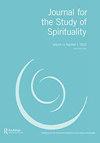在当代艺术中邂逅精神
IF 0.8
0 RELIGION
引用次数: 4
摘要
瓦西里·康定斯基说,艺术属于精神生活,是精神生活最有力的表现形式之一。康定斯基(V. Kandinsky)认为,精神层面是有意义艺术的核心,其根源在于抽象的“神秘精神”概念。无论这个想法看起来多么过时,它都是一个主题,在艺术精神生活的最新轮回中再次出现,作为一种虚拟展览,这是纳尔逊-阿特金斯艺术博物馆(Nelson-Atkins Museum of art)提议但未完成的项目的残余。上世纪80年代的两个具有里程碑意义的展览是其明确的先驱:“艺术中的精神:1890-1985年的抽象画”和“魔术师”(Magiciens de la terre),前者通过神秘主义、神秘主义和抽象主义追溯了艺术中的灵性路线,后者将现代本土非西方艺术创作与西方同时代的艺术创作进行了比较。与当代艺术中的精神相遇将这两条线索结合在一起,就像之前的项目一样,旨在将精神价值重新引入艺术的展示中。在一本插图丰富的书中,由大量的文章巧妙地支持,它在四个一般主题的标题下借鉴了不同的宗教和文化传统:艺术创作作为精神过程,物质实践,灵感来源,艺术家的身体作为精神内容的象征。它以抽象作为精神的中心开始,继续研究第一民族和美国印第安人艺术,澳大利亚土著艺术,非洲艺术,苏菲主义和犹太教-基督教传统,确定精神是全球艺术家的动力,而不是优先考虑任何一种艺术表现形式。Leesa K. Fanning是这个系列的指导声音。她对精神的定义是广泛的,包括超越的和内在的,个人的和公共的,直接的无中介的经验和宗教仪式。它是不可言喻的,但也植根于物质实践。它超越了宗教,也超越了“我”或自我,这是艺术最好的暗示。如果说L. K. Fanning的观点有争议的一面,那就是她认为当代艺术对这些想法的持久迷恋,以及在当代艺术中几乎完全没有这种迷恋本文章由计算机程序翻译,如有差异,请以英文原文为准。
Encountering the spiritual in contemporary art
1 Art, said Vassily Kandinsky, belongs to the spiritual life and is one of its most potent expressions. V. Kandinsky assumed a spiritual register to be central to meaningful art, with its roots in “mystical-spiritual” notions of abstraction. However outmoded this idea might seem, it is a theme taken up again in this latest reincarnation of art’s spiritual life, presented as a kind of virtual exhibition, the remnant of a proposed but unfulfilled project for the Nelson-Atkins Museum of Art. Two landmark exhibitions from the 1980s are its clear precursors: The Spiritual in Art: Abstract Painting 1890-1985 , and Magiciens de la terre , the former tracing a line of spirituality in art through esotericism, the occult and abstraction, the latter drawing parallels between modern indigenous non-western art-making and its western contemporaries. Encountering the Spiritual in Contemporary Art draws these two threads together aiming, like those earlier projects, to reintroduce spiritual value into the display of art. In a richly illustrated volume, ably supported by substantial essays, it draws on diverse religious and cultural traditions under the rubric of four general themes: art-making as spiritual process, material practices, sources of inspiration, and the artist’s body as signifier of spiritual content. Opening with abstraction as a locus of spirituality, it goes on to examine First Nation and American Indian art, Australian aboriginal art, African arts, Sufism, and the Judeo-Christian tradition, identifying the spiritual as a motivating force in artists globally without prioritising any one artistic expression over another. Leesa K. Fanning is the guiding voice in this collection. Her definition of the spiritual is broad, encompassing the transcendent and immanent, personal and communal, direct unmediated experience and religious ritual. It is ineffable yet also grounded in material practices. It goes beyond religion, but also beyond the “I” or ego, to all of which art at its best alludes. If there is a polemical dimension to L. K. Fanning’s argument it consists in what she sees as a persistent fascination in contemporary art for such ideas and its almost complete absence in
求助全文
通过发布文献求助,成功后即可免费获取论文全文。
去求助
来源期刊

Journal for the Study of Spirituality
RELIGION-
CiteScore
2.50
自引率
7.10%
发文量
25
期刊介绍:
Journal for the Study of Spirituality is a peer-reviewed journal which creates a unique interdisciplinary, inter-professional and cross-cultural forum where researchers, scholars and others engaged in the study and practices of spirituality can share and debate the research, knowledge, wisdom and insight associated with spirituality and contemporary spirituality studies. The British Association for the Study of Spirituality (BASS) organises a biennial international conference and welcomes enquiries about membership from those interested in the study of spirituality in the UK and worldwide. The journal is concerned with what spirituality means, and how it is expressed, in individuals’ lives and communities and in professional practice settings; and with the impact and implications of spirituality in, and on, social policy, organizational practices and personal and professional development. The journal recognises that spirituality and spiritual values can be expressed and studied in secular contexts, including in scientific and professional practice settings, as well as within faith and wisdom traditions. Thus, Journal for the Study of Spirituality particularly welcomes contributions that: identify new agendas for research into spirituality within and across subject disciplines and professions; explore different epistemological and methodological approaches to the study of spirituality; introduce comparative perspectives and insights drawn from different cultures and/or professional practice settings; aim to apply and develop sustained reflection, investigation and critique in relation to spirituality and spiritual practices; critically examine the values and presuppositions underpinning different forms of spirituality and spiritual practices; incorporate different forms of writing and expressions of spirituality.
 求助内容:
求助内容: 应助结果提醒方式:
应助结果提醒方式:


